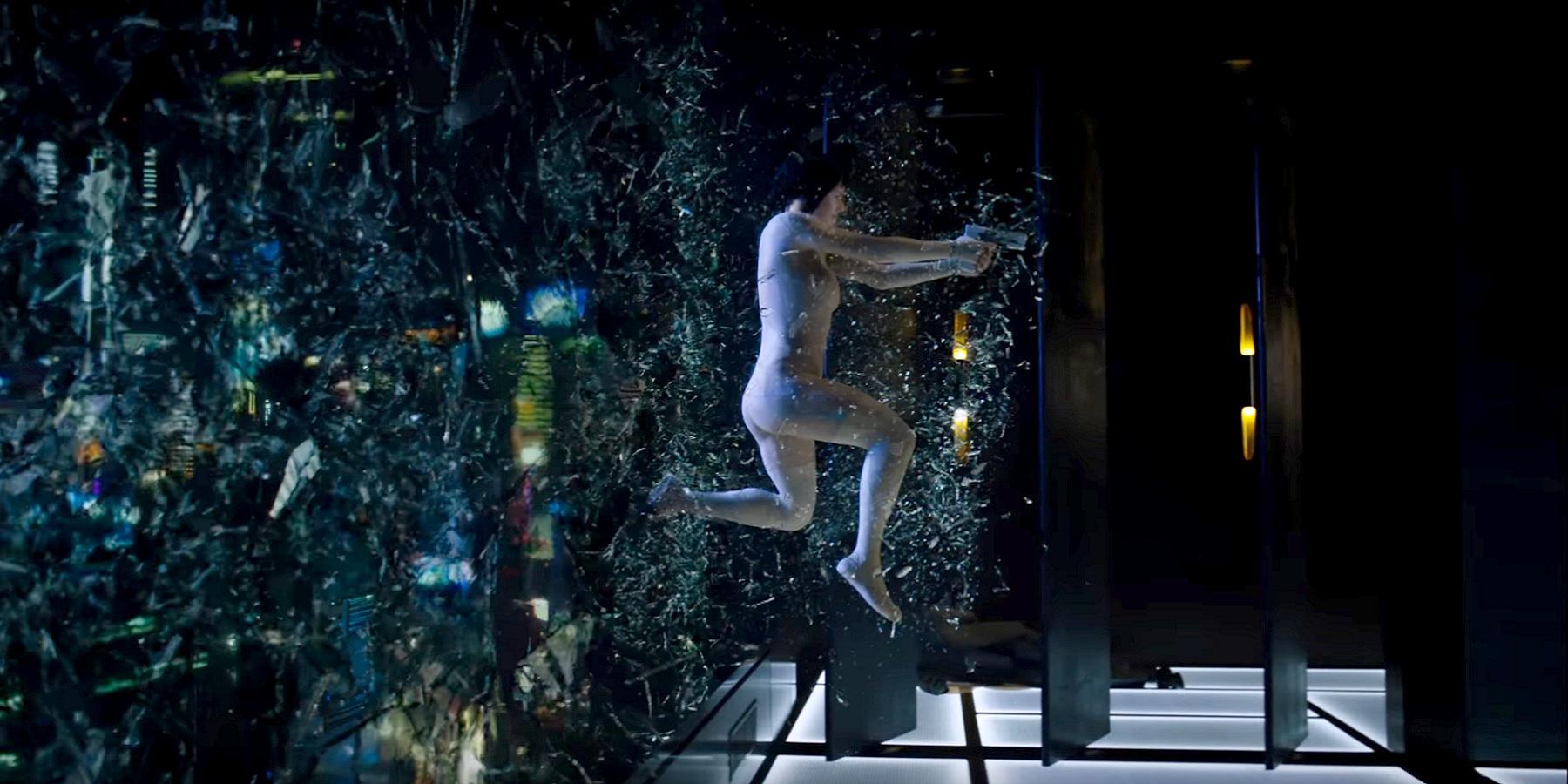Ghost in the Shell review: Visually impressive but often incomprehensible
The movie is as much of a hybrid as its lead character. It combines high-minded postmodern philosophising with very generic, often very banal, thriller elements

Rupert Sanders, 107 mins, starring: Scarlett Johansson, Michael Pitt, Rila Fukushima, Juliette Binoche, Pilou Asbæk, Michael Wincott
Fantasy, reality, dreams, memory? They’re all “ just noise”. Or so a character observes early on in this mind-bending, visually impressive – but often incomprehensible – new sci-fi movie. Ghost In The Shell (adapted from the Japanese Manga series and movies) might not stack up plot-wise but what it does reinforce is Scarlett Johansson’s status as one of the great stars of her era; an actress with the presence, glamour and personality to hold together even the most outlandish and bizarre of blockbusters.
Johansson here may be playing an Asian character who originated in Japanese anime but she bears more than a passing resemblance to Louise Brooks, the bobbed-haired American femme fatale of the silent era. She plays the “Major” (full name: Motoko Kusanagi), a cyborg with super-human powers “created” in the lab by Dr Ouélet (Juliette Binoche). After 98 unsuccessful prototypes, she’s the first robot of her kind that actually works. The folks at Hanka Robotics don’t think of her as a machine. She’s “a weapon” with four programming nodes on the back of her neck who can be used to combat terrorists and criminals. She’s cold and destructive but Johansson is always able to hint at her yearning and inner feelings. Buried deep within her, she has memories – flickerings of humanity.
Director Rupert Sanders (whose previous feature was the equally overcooked Snow White And The Huntsman) flirts with high kitsch. Whenever she goes into action, for reasons never properly explained, the Major wears a flesh-coloured bodystocking and launches herself by falling backwards off a skyscraper. The film is set in a futuristic Blade Runner style world which combines both eastern and western elements. Holograms hover over skyscrapers. Robots and humans share the streets.
Major's boss is played by Japanese actor-director Takeshi Kitano, who speaks in Japanese, but many of the other characters are American or European. We are not quite sure whether we are in Hong Kong, Tokyo or New York, or some strange fusion of the cities. The Major's colleague (and potential love interest) Batou is played by a Scandinavian, Pilou Asbæk (from Borgen and Game Of Thrones.) He may look like Max Headroom but he’s a regular guy who, incongruously in this futuristic world, likes fishing and drinks beer from the can.
In the hi-tech universe that Sanders conjures up, the lines between the humans and the cyborgs have become very blurred. The former, if they can afford to, spend small fortunes on cyber-enhancement. The latter, like the Major herself, retain a trace of humanity. They're up against a villain (Michael Pitt) who can infiltrate their systems, leave viruses in his wake and brainwash humans into doing his bidding.
One of the more intriguing aspects of Ghost In The Shell is the way it borrows from the European Gothic tradition as well as from Oriental sources. The scientist played by Binoche has a hint of Frankenstein about her. Pitt's tormented, wandering anti-hero Kuze is the monster who has turned against his creators. There is a doomed romanticism about him which distinguishes him from the creepy corporate types like Cutter (Peter Ferdinando) who are driving the Artificial Intelligence programme and messing with “the human soul.”
Each frame of Ghost In The Shell comes crammed with visual information. Characters dress in ritualistic fashion, in masks and robes. We get to see the cyborgs’ mechanical innards. The action sequences make heavy use of slow motion – which makes them sometimes seem like experimental dance routines. In one bravura sequence, the Major connects cables to the back of her neck and disappears into some dark realm of cyberspace where she endures nightmarish experiences. She has been implanted with false memories. A little like the robot boy played by Haley Joel Osment in Steven Spielberg’s A.I. Artificial Intelligence, she is desperate to find out her origins and to experience a little tender mother love. (The eventual encounter with the mother, though, is jarring and bizarre. The mother is Chinese and Johansson palpably is not.)
The movie is as much of a hybrid as its lead character. It combines high-minded postmodern philosophising with very generic, often very banal, thriller elements. Takeshi Kitano made his name internationally in Japanese gangster films like Violent Cop and Sonatine in the late 1980s and early 1990s. Sanders pays tribute to Kitano’s past with a couple of late scenes which allow him to show his ability to shoot up his enemies while maintaining an expression as impassive as that of Buster Keaton. This is Juliette Binoche’s second US studio blockbuster after Godzilla in 2014. It’s still a surprise to see such a darling of European art house cinema in fare like this but she brings steeliness and tenderness to her role as the doctor who feels a strong maternal responsibility to the cyborgs she coaxes into being in the labs.
Seen in 3D IMAX on a gigantic screen, Ghost In The Shell is undeniably spectacular. (This isn’t a film to watch on your phone.) Whatever its shortcomings, it underlines Johansson’s credentials as the most charismatic and versatile screen superheroine of her era.
Join our commenting forum
Join thought-provoking conversations, follow other Independent readers and see their replies
Comments